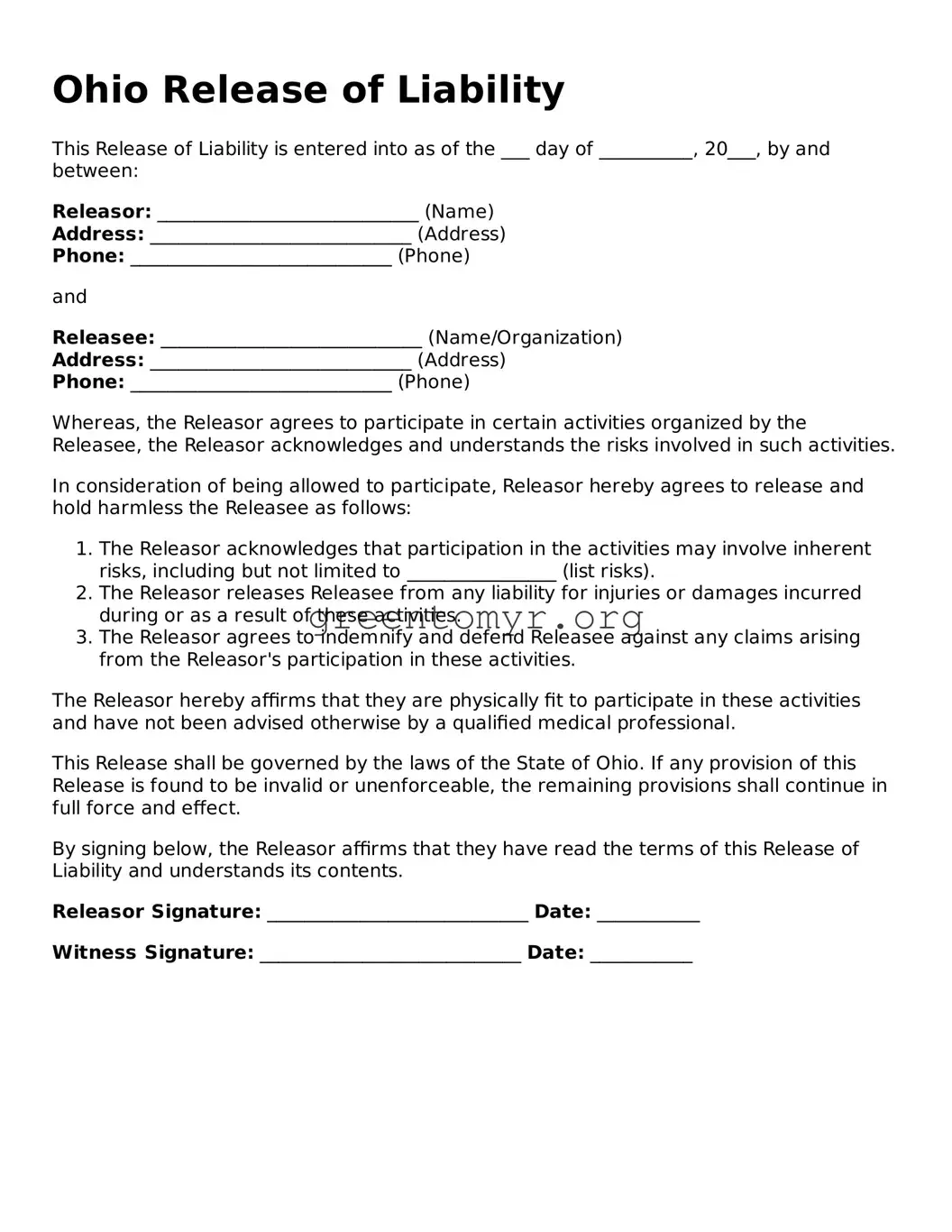Ohio Release of Liability
This Release of Liability is entered into as of the ___ day of __________, 20___, by and between:
Releasor: ____________________________ (Name)
Address: ____________________________ (Address)
Phone: ____________________________ (Phone)
and
Releasee: ____________________________ (Name/Organization)
Address: ____________________________ (Address)
Phone: ____________________________ (Phone)
Whereas, the Releasor agrees to participate in certain activities organized by the Releasee, the Releasor acknowledges and understands the risks involved in such activities.
In consideration of being allowed to participate, Releasor hereby agrees to release and hold harmless the Releasee as follows:
- The Releasor acknowledges that participation in the activities may involve inherent risks, including but not limited to ________________ (list risks).
- The Releasor releases Releasee from any liability for injuries or damages incurred during or as a result of these activities.
- The Releasor agrees to indemnify and defend Releasee against any claims arising from the Releasor's participation in these activities.
The Releasor hereby affirms that they are physically fit to participate in these activities and have not been advised otherwise by a qualified medical professional.
This Release shall be governed by the laws of the State of Ohio. If any provision of this Release is found to be invalid or unenforceable, the remaining provisions shall continue in full force and effect.
By signing below, the Releasor affirms that they have read the terms of this Release of Liability and understands its contents.
Releasor Signature: ____________________________ Date: ___________
Witness Signature: ____________________________ Date: ___________
